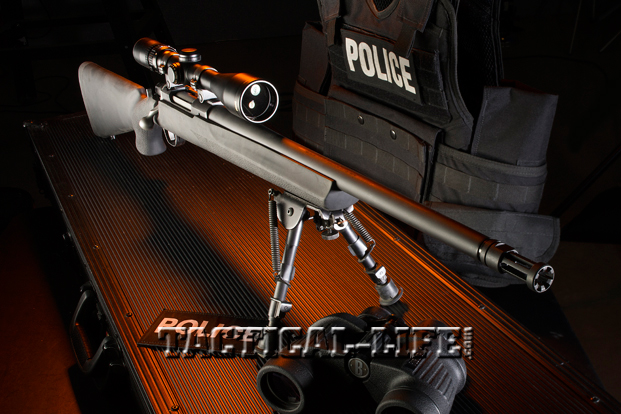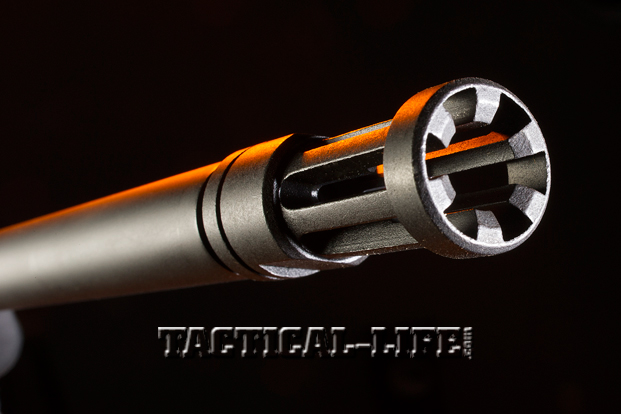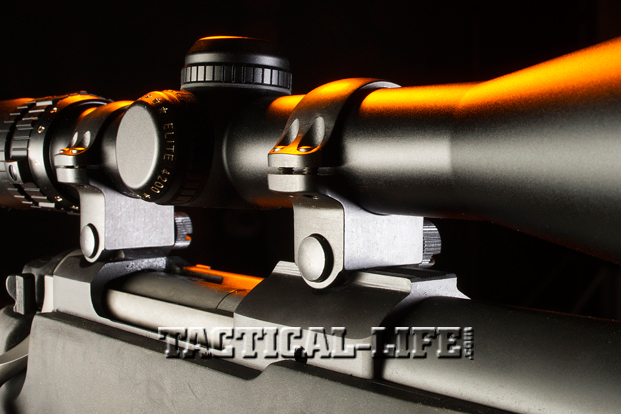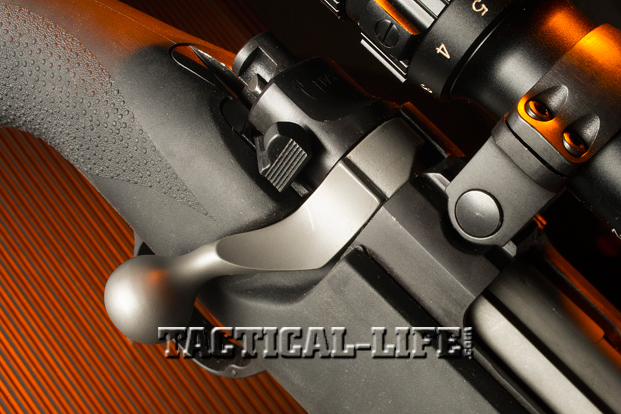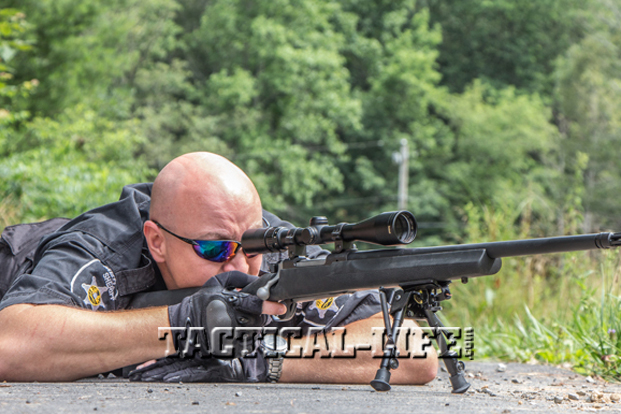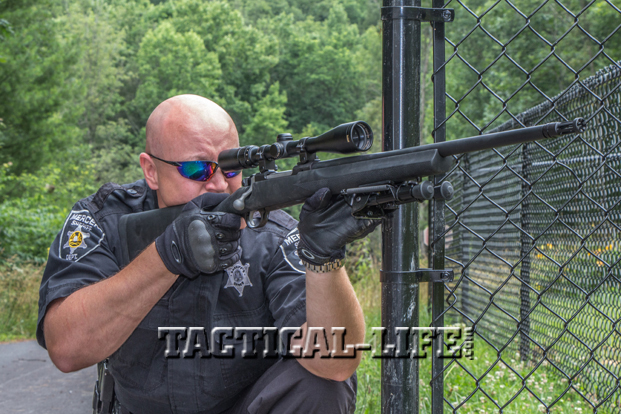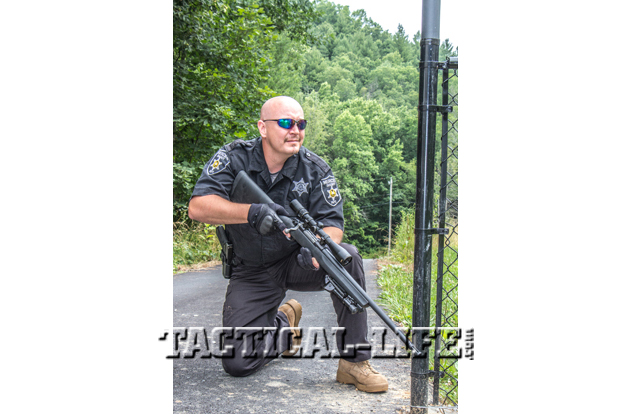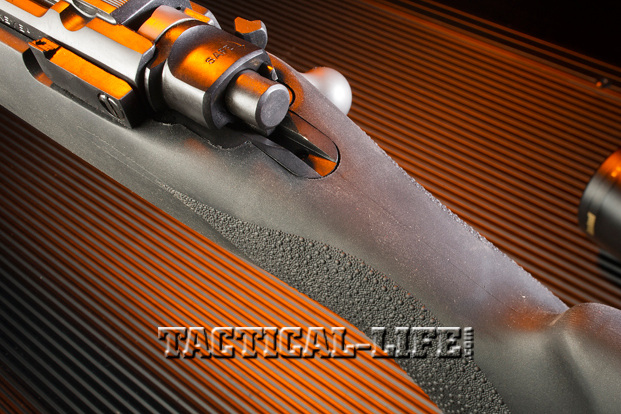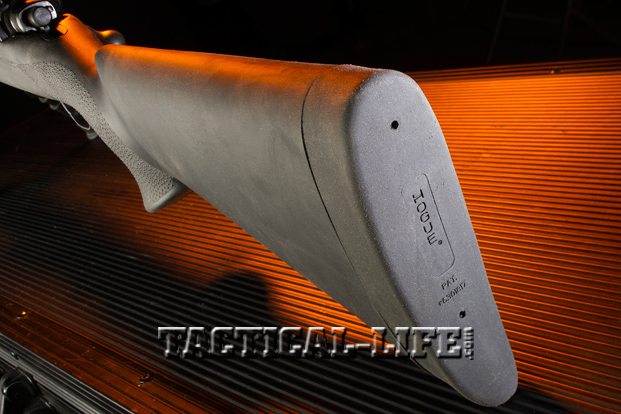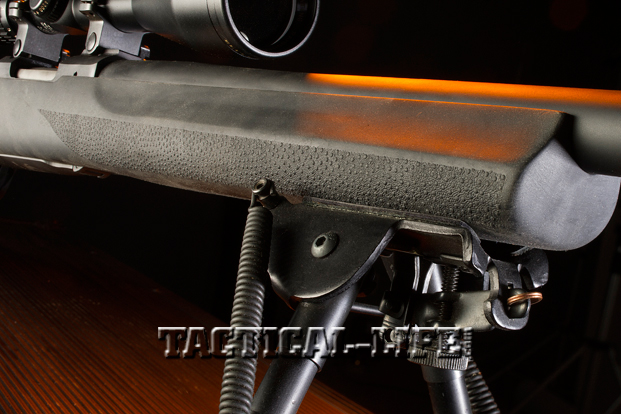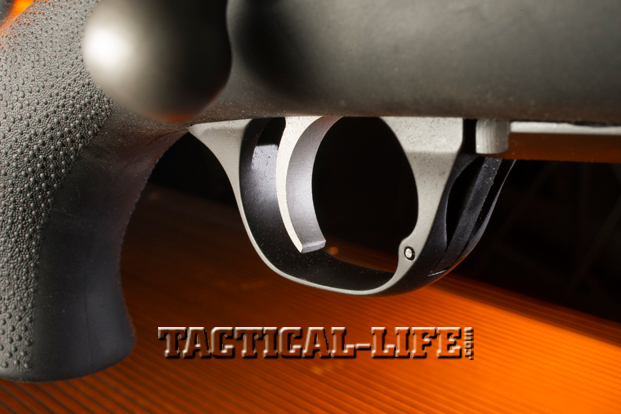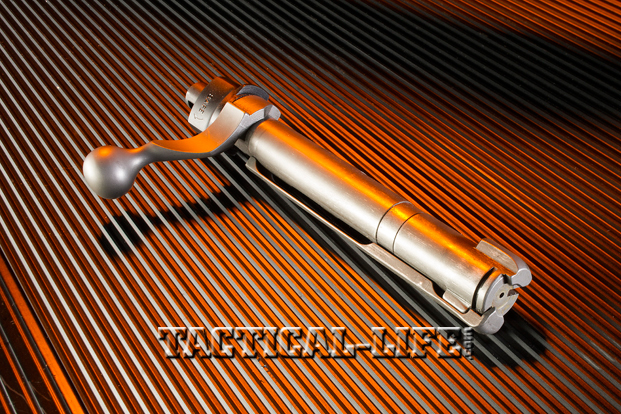Of course, that’s nothing new. Combating that danger is not new, either. Citizens and police have been doing that for a long time. What is new are some of the tools frequently being used by police to fight the war on crime. It’s been almost 10 years since I turned in my badge, and when I talk with some of the old timers—yes, the guys I worked with are now old—I’m surprised to find that the tools I was begging for a decade ago are now becoming more accepted, particularly patrol-type law enforcement rifles.
When I was on the street in the ’90s, requests for a patrol rifle were met with comments like, “You have a shotgun.” I guess in reality it’s nothing more than evolution. The guys I worked the street with knew that having a rifle in the patrol car, which was capable of hitting at extended ranges and ending a fight when the hit was made, just made good sense. Today, those same guys are in charge, and they are changing the equipment list.
Manufacturers are responding with a wide assortment of rifles suited to patrol and more tactical law enforcement applications. Ruger is no exception, and the company’s latest entry into this subcategory of rifles is the M77 Hawkeye Tactical, which is a dedicated and enhanced version of its bread-and-butter sporting rifle.
Advertisement — Continue Reading Below
Gun Details
The Hawkeye Tactical is built on Ruger’s proven Model 77 Mark II action. This is an action similar in design to the famous Mauser action in that it has a fixed ejector, a safety that blocks the firing pin and a full-length claw extractor. Given the similarities, you would assume the Hawkeye action is also a controlled-round-feed (CRF) action like the Mauser, but that’s not the case, and as far as I’m concerned, this is a good thing.
You see, with a true CRF action, you must fully insert the cartridge in the magazine box in order for the rim of the case to slide up under the hook in the extractor as the cartridge is being chambered. The problem with this system is that you have to insert the cartridge into the magazine box before it can be chambered. This might not seem like a big deal, but from a tactical standpoint, what if you run your rifle dry and need to get off one more shot quickly? It will take about an extra second to push that cartridge into the magazine box. With a push-feed (PF) action or an action like the Ruger Mark II, you can just toss the cartridge in through the ejection port and close the bolt.
Advertisement — Continue Reading Below
The Ruger Hawkeye’s action is no different than any other Ruger Model 77 Mark II actions, with the exception of the matte black/blued finish, which is obviously appropriate given the intended mission. In fact, all of the metal surfaces of this rifle are matte black, with the exception of the bolt, which has a matte grey finish.
The rifle has a heavy-contour barrel that measures 0.80 inches at the muzzle, and it is also threaded. Out of the box, the barrel is fitted with a flash suppressor, but it can be removed, which gives you the option of attaching a sound suppressor. You have to admit that this is a pretty neat feature—and not just for fighting it out with bad guys from a patrol or SWAT perspective. Many game departments are now being tasked with killing critters in urban areas, and the option of adding a suppressor gives the Hawkeye a tactical edge over most of the competition in its price range.
The Hawkeye also has a synthetic OverMolded stock from Hogue. And that’s not a bad thing. One of the most accurate rifles I own has this same stock on it, and I’ve tested several others so equipped. With its pillar bedding, this stock is a good deal for the money. The sharp grip angle is comfortable, and the straight comb makes the rifle easy to get behind in any shooting position. As for the prone shooting position, this rifle comes with a short Harris bipod, which is worth at least a hundred bucks.
Advertisement — Continue Reading Below
Range Time
What I like best about this rifle is its trigger. It is, without a doubt, the best Ruger factory trigger I have ever pulled. After about a quarter-inch of take-up, the trigger broke clean and crisp at just a shade over 2 pounds, which is just about perfect in my book. I talked with one of my contemporaries who was also testing one of these rifles, and he said the trigger on his test rifle was excellent as well. So, I do not think the trigger on the rifle I tested was a fluke. I often install a Timney trigger on every new rifle I buy, but this rifle does not need one.
On the negative side, the action was not all that smooth. Don’t get me wrong, it was not rough, but it was also not as smooth as most of the Ruger Model 77 Mark II actions I’ve worked with. That being said, it’s been my experience that all Ruger Model 77 Mark II actions smooth out with use, and after about 100 rounds I could feel this rifle’s action becoming slicker.
Advertisement — Continue Reading Below
Aside from that, the only other negative comment I would make is that this particular rifle seemed finicky when it comes to ammo. It really liked some loads and really disliked others. Past experience with Ruger Model 77 Mark II rifles has shown them to, on average, shoot between 1 and 2 MOA out of the box. The first group I fired with this rifle at 100 yards measured less than an inch, so I was expecting great things right off the bat.
That group was fired with Nosler’s 55-grain Varmageddon load, and after two more five-shot groups, that load provided an average group size just over an inch. So far so good, I thought. The next ammo I tested was Winchester’s PowerMax 64-grain Bonded load. It did not shoot so well, averaging almost 3 inches for three 5-shot groups.
The last load I tested was Remington’s 69-grain Match load. This is generally a top performer in every .223 Remington rifle I test. In fact, I almost always expect five-shot groups with this load to be no larger than 1.5 MOA. But the Ruger M77 Hawkeye Tactical wasn’t all that fond of this load, either. The average for three 5-shot groups was about 1.75 inches.
Advertisement — Continue Reading Below
I don’t believe the larger groups with the heavier bullets was a twist-rate issue. Apparently this rifle was just a tad picky. Given the performance of the Nosler Varmageddon load, I feel confident that with a little searching, several good shooting loads could be found for this rifle, especially considering the wide selection of .223 Remington ammo there is to choose from.
Final Thoughts
After almost 200 rounds, I think it’s safe to say the Ruger M77 Hawkeye Tactical is worth considering if you are looking for a patrol or tactical response rifle. Unlike 20 years ago, when choices for rifles like this were limited, individual officers and departments today have a lot of rifles to look over. One thing’s for sure: As far as out-of-the-box factory rifles go, you won’t find one with a better trigger—and that includes rifles costing twice as much.
The Ruger M77 Hawkeye Tactical also comes with a Harris bipod and integral scope bases and rings. That’s about $200 dollars’ worth of gear you will not have to purchase, and both the Harris bipod and the Ruger rings are dependable equipment. I wish I had one of these in my patrol car 20 years ago. No, it does not have a lot of bells and whistles, but for 90 percent of all the tasks a police officer or department will ask this rifle to complete, it does not need them, and you don’t have to pay for them, either. The Ruger M77 Hawkeye Tactical is a practical patrol rifle. For more information, visit ruger.com.
Advertisement — Continue Reading Below
